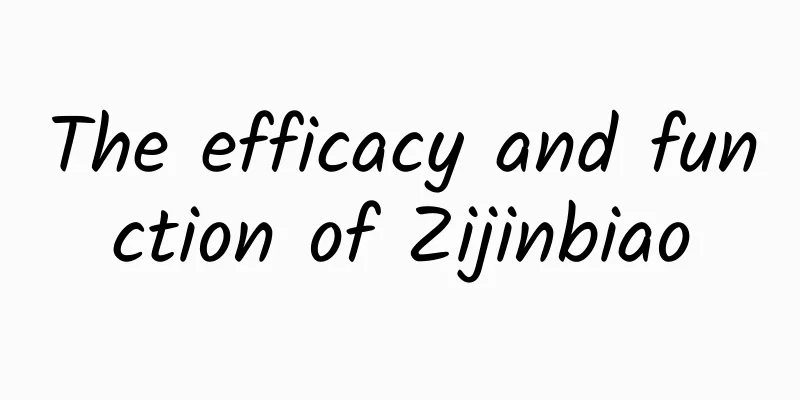"Health from eating" series | Why do we often say "eat radish in winter and ginger in summer"? Uncover the mystery of Chinese medicine diet therapy

|
"Eat radish in winter and ginger in summer" is a folk proverb often mentioned by Chinese people. As for why radish and ginger are eaten in winter and summer, it is not because of the seasons when radish and ginger mature, but because of the traditional Chinese food culture and Chinese medicine diet therapy culture. Today, let's uncover the mystery of Chinese medicine diet therapy. First of all, how does Chinese medicine use diet therapy? According to the treatment principles of traditional Chinese medicine, clinical treatment should be based on the cold, heat, deficiency and excess of the disease. Only by choosing appropriate foods and dishes on the basis of correct differentiation can the expected therapeutic effect be achieved. For cold diseases, warming foods should be chosen; for hot diseases, cold foods should be chosen. How does traditional Chinese medicine explain “eat radishes in winter and ginger in summer”? There is a relevant discussion in Zhang Zhongjing's classic Chinese medicine book "Treatise on Febrile Diseases". The general meaning is that in the summer represented by May, the yang energy is strong and radiates upward and outward, resulting in abnormally hot weather. However, at the same time, the yang heat in the human body is weak and it is easy to get cold, so it is manifested as hot weather and cold ground, which corresponds to the human body as "yang outside and yin inside, and coldness in the stomach". The situation in winter is just the opposite. The yang energy is inward and in a state of storage. The yang energy outside is weak and the yang energy inside is accumulated. Therefore, it is manifested as cold weather and hot ground, which corresponds to the human body as "yin outside and yang inside, and heat in the stomach". Radish is a cold food, while ginger is a hot food. "Eating radish in winter and ginger in summer" is to use the cold and hot properties of these two foods, match the cold and hot changes of the seasons, and complement cold and heat, and regulate yin and yang. Winter is the time when the Yang energy in the human body is at its strongest. At this time, Chinese people often "put on weight in autumn" and take winter tonics. They take too much warm and nourishing food and are unwilling to exercise, which can easily lead to heat in the stomach. At this time, eating radish can help clear away the accumulated heat. In summer, due to the hot weather, the human body is prone to sweating, causing the body surface temperature to rise, and the Yang energy in the body is relatively weakened. In addition, people often tend to eat cold foods to "cool down", which can easily lead to "coldness in the stomach". Eating ginger can help dispel cold and replenish Yang. The above is the mystery of Chinese medicine diet therapy contained in the proverb "eat radishes in winter and ginger in summer". Author: Du Kun and Wang Tao from Luoyang Normal University Review expert: Wang Yao, associate professor of the School of Food and Bioengineering, Henan University of Science and Technology References: [1] Liu Hongliang, deputy chief physician of the First Affiliated Hospital of Henan University of Traditional Chinese Medicine, "What are the basic principles of Chinese medicine diet therapy?" [2] Zhang Zhongjing, “Treatise on Febrile Diseases: Method of Pulse Diagnosis”. [3] Huangdi Neijing: A Treatise on the Four Qi and the Regulating Spirit. |
<<: "Space Photographer" Takes Action, Leaving More Than Just Beauty
>>: Popular Science Illustrations | How Technology Keeps the Radiation Environment Safe
Recommend
The efficacy and function of Torreya grandis
As a traditional Chinese medicine, Torreya grandi...
The year's "biggest full moon", "super moon" and "blue moon" appear at the same time. How often does such a "special" astronomical phenomenon occur?
I don’t know if you have noticed that this August...
The efficacy and function of turtle blood
Speaking of turtle blood, many people know that i...
These 3 subconscious behaviors mean you are bullying yourself, please stop immediately!
What should we do when we are bullied? Some peopl...
What are the effects and functions of Cnidium monnieri
Cnidium monnieri is a traditional Chinese medicin...
What are the benefits of Polygonum multiflorum for hair?
Polygonum multiflorum is a common Chinese medicin...
Have you ever been affected by these noises at home? 3 ways to reduce the noise!
It’s so noisy! This is probably our most direct a...
Placed: Traditional retailers become Amazon's product experience stores
Placed released a study on the impact of Amazon o...
Congratulations! New members of the two academies
On the 18th, the Chinese Academy of Sciences and ...
The efficacy and function of Aspleniaceae Yunnanensis
Yunnan Styrax is one of the common traditional Ch...
Can all calculations be performed using only a piece of white paper?
Although many people regard origami as an interes...
What are the effects of wormwood foot bath powder
Ancient people said, "Soaking your feet in h...
These 3 types of people are really not suitable for naps! Check if it’s you
Spring sleepiness, summer fatigue, autumn naps, a...
What are the benefits of drinking Lingzhi water?
We have all heard of Ganoderma lucidum, especiall...
I ate two zongzi and vomited all night! Urgent reminder: Don’t eat zongzi like this!
How many rice dumplings did you eat yesterday? No...









